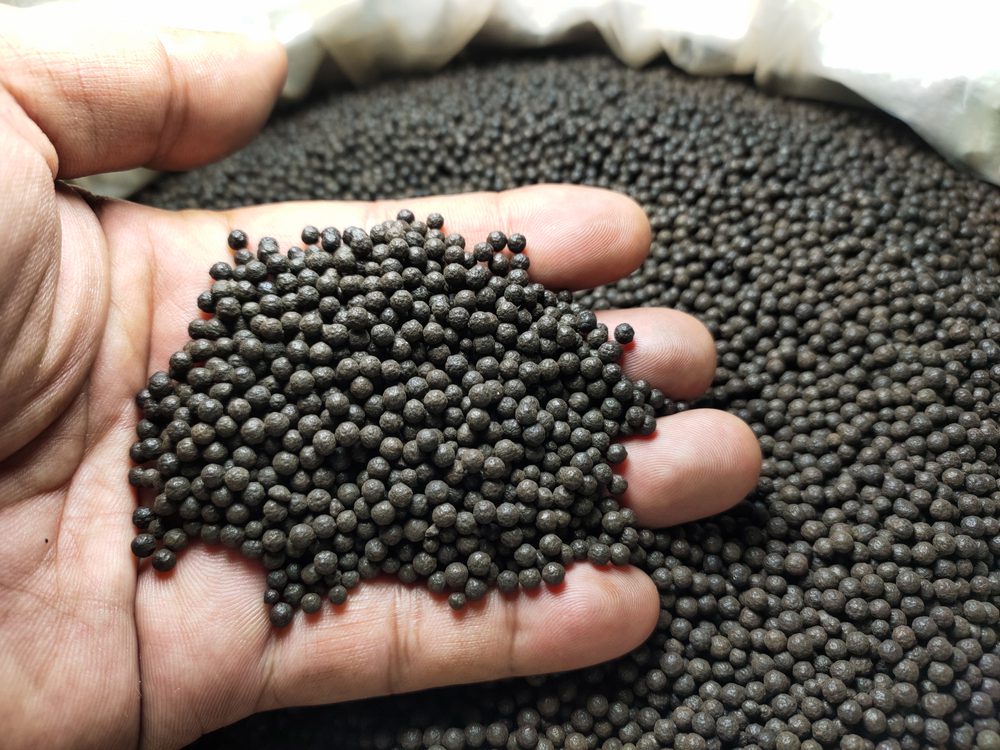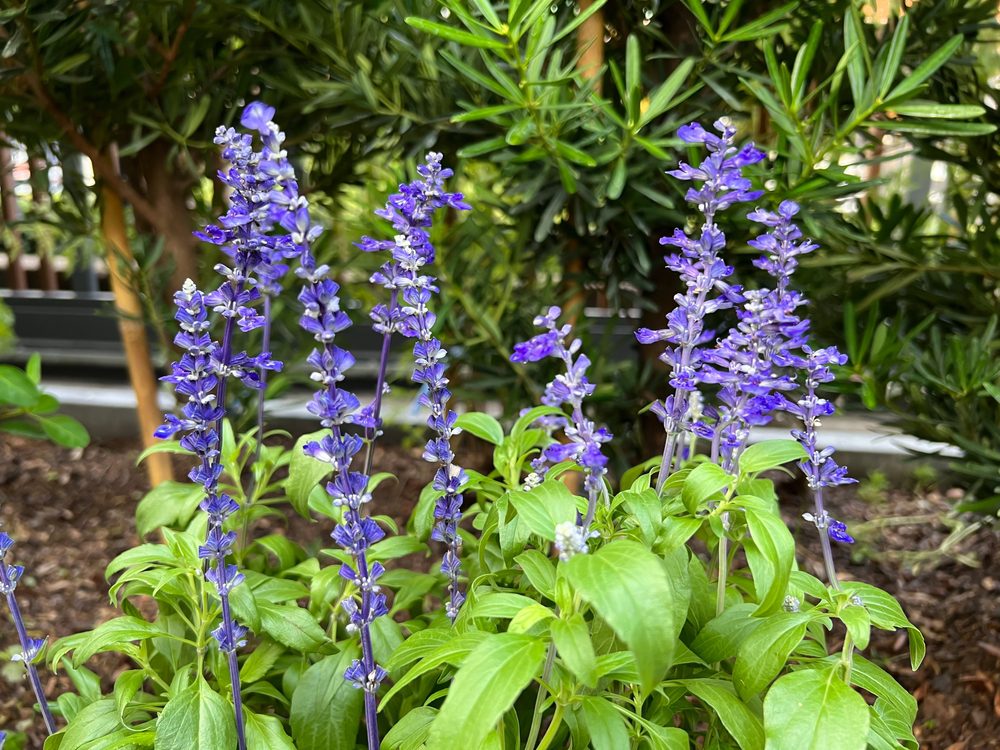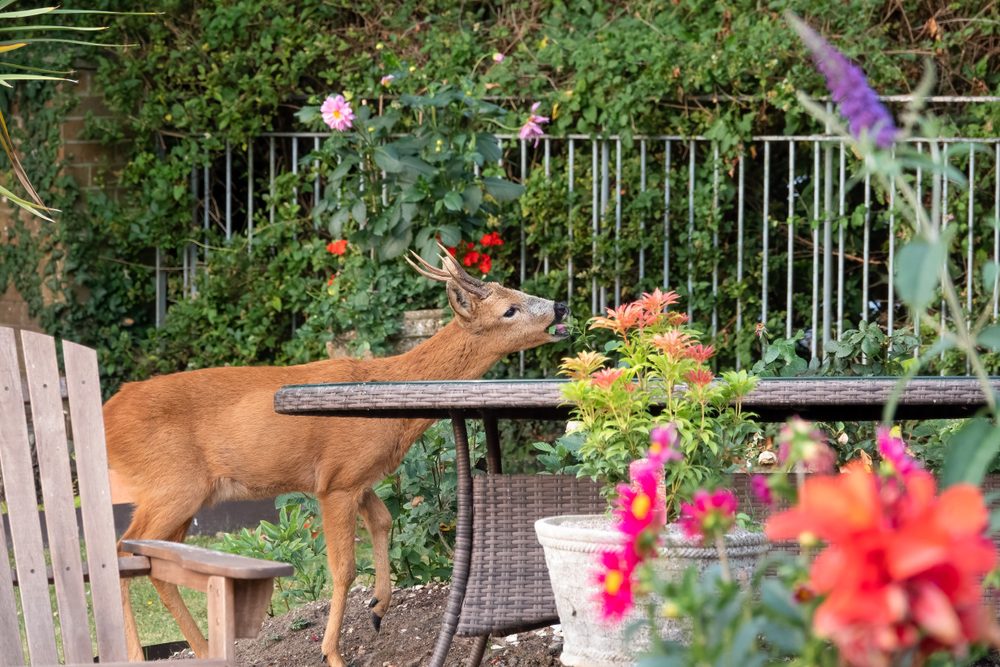Deer can be charming to watch from a distance, but when they start munching on your garden, they quickly lose their appeal! In Chicagoland, many gardeners struggle to protect their plants from becoming a buffet for these graceful creatures. Fortunately, there are several effective ways to deter deer without harming them or your garden. From smart plant choices to natural repellents and strategic fencing, you can safeguard your landscape and enjoy a lush, vibrant garden.
Add Physical Barriers or Fencing
One of the most effective ways to keep deer out of your garden is by installing physical barriers like fences. Since deer can jump high, an 8-foot fence is ideal for full protection. Opt for solid fencing or mesh, as deer are less likely to attempt a jump if they can’t see what’s on the other side. Electric fences can also be a great option for larger spaces.
If a full fence isn’t feasible, shorter fences around 5 to 6 feet can still work, especially in areas with lower deer pressure. To enhance their effectiveness, try adding a second, shorter fence a few feet outside the main one. Deer have poor depth perception and are less likely to jump over two barriers. You can also angle the fence outward to make it harder for them to clear.
For smaller-scale solutions, consider plant cages or netting around young or vulnerable plants. These barriers protect your garden from becoming an easy snack, encouraging deer to move on to other areas.
Place Motion Sensors Around Your Garden
If you live in an area where fences are restricted by your HOA or local regulations, or if you prefer not to block your view of the outdoors, motion-activated devices can be an excellent way to startle deer and keep them out of your garden. Motion sensor lights, sprinklers, or noisemakers activate when deer approach, scaring them off without causing harm.
Deer tend to avoid areas where sudden movements or sounds occur, as they prefer a calm environment for feeding. Motion-activated sprinklers, in particular, work well because they not only startle the deer but also give them an unpleasant, harmless spray of water.
Place these devices near high-traffic areas or around plants that are especially attractive to deer. To prevent deer from getting used to the devices, it’s a good idea to move them around occasionally. With motion sensors in place, you can create a deer-free zone without constant maintenance or large physical barriers.
Apply Deer-Repellent to Your Plants
For a less intrusive approach, using deer-repellents is a simple and effective way to keep deer from munching on your garden. These products work by making your plants less appealing through unpleasant scents or tastes. Commercial repellents often contain ingredients like garlic, rotten eggs, or hot pepper, which deer dislike. You can spray them directly onto plants, but be sure to reapply every few weeks or after rainfall to maintain effectiveness.

An alternative option is Milorganite, a popular lawn fertilizer made from Milwaukee sewer sludge. The human scent in Milorganite naturally deters deer, making your garden less attractive to them. Milorganite is easy to use and doesn’t have a noticeable smell, even though it’s made from recycled materials. Spread it around your plants or over your lawn to keep deer at a distance.
For best results, use repellents alongside other strategies, like fencing or motion-activated devices. This multipronged approach ensures your plants stay protected, even in areas with heavy deer traffic.
Spray Scent-Deterrents
Scent-deterrents are another excellent way to keep deer away from your plants. Products like Plant Skydd and Repels All are specifically designed to repel deer using strong odors that they find unpleasant but are safe for plants and wildlife. Plant Skydd, made from dried blood, mimics the smell of predators, naturally scaring deer away. Repels All combines ingredients like garlic, cloves, and pepper to create a mild irritant that doesn’t injure the deer but gives off a scent they can’t stand.
These products can be sprayed directly onto plants or around the perimeter of your garden for broader protection. For best results, reapply after heavy rainfall or every few weeks to ensure the scent stays strong. Using scent-deterrents can make your garden far less appealing to deer without disrupting your landscape’s natural beauty.
Choose Deer-Resistant Plants
One of the most effective ways to deter deer from your garden is by planting species they tend to avoid. Deer-resistant plants are less appealing due to their texture, scent, or taste, making your garden a less attractive dining spot.
For shrubs and trees, consider planting Green Giant Arborvitae, Junipers, or Clethra (like Ruby Spice or Hummingbird). Smokebush (Royal Purple, Winecraft Black, Winecraft Gold) is another great option with its striking foliage that deer generally leave alone.
In the perennial category, deer tend to steer clear of Perovskia (Denim and Lace, Little Spire) and Salvia (May Night, Bumbleberry), both known for their aromatic leaves. Allium (Millenium, Summer Beauty) and Baptisia (Solar Flare) also provide excellent deer resistance and add unique texture to your garden.
Don’t forget ornamental grasses—deer rarely bother with these, and they can add movement and structure to your landscape. With these deer-resistant varieties, you can enjoy a beautiful garden that’s far less likely to be damaged by unwelcome visitors.
Strategize Your Garden Layout
Ultimately, however, no garden is completely deer-proof—hungry deer will eat just about anything—smart garden design can still help minimize damage. By strategically placing deer-resistant plants around your more vulnerable favorites, you create a natural barrier. For example, highly desirable plants should be surrounded by tough, aromatic perennials like salvia or allium, which deer are less likely to nibble on.
Consider placing deer-resistant shrubs, such as Junipers or Smokebush, near entry points to discourage deer from venturing further into your garden. Incorporating elements like raised beds or terraces can also make it more challenging for deer to reach certain plants.

Additionally, avoid planting deer-favorite species like hostas or tulips near the garden’s edge, as these can attract unwanted attention. By thoughtfully layering deer-resistant plants and using physical obstacles, you can create a layout that helps protect your most treasured plants, even if hungry deer occasionally wander through.
Visit Platt Hill Nursery for Deer-Resistant Landscaping Services
If you’re looking to protect your garden from deer while maintaining a beautiful landscape, Platt Hill Nursery is here to help. Our team of experts can guide you in selecting the best deer-resistant plants for your yard, from hardy perennials to durable shrubs like Green Giant Arborvitae, Junipers, and Smokebush. We also offer personalized landscaping services to help you design a garden that naturally deters deer.
Whether you need advice on plant selection, layout strategies, or adding physical barriers, our knowledgeable staff can help you create a stunning and protected outdoor space. Visit us today at our Bloomingdale or Carpentersville locations, and let’s work together to build the deer-resistant garden of your dreams!


